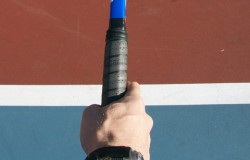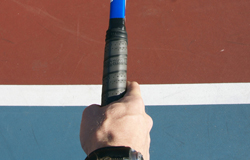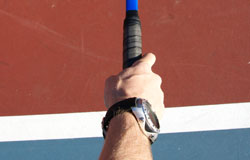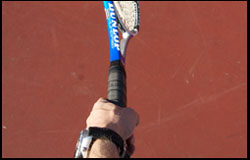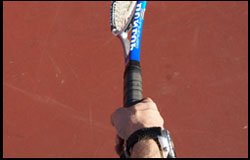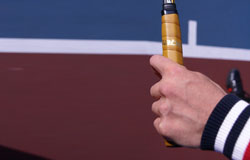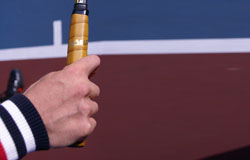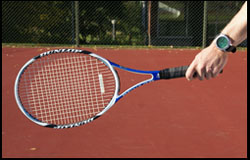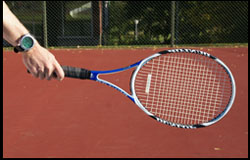FOREHAND
EASTERN GRIP
The Eastern forehand grip is the classic grip most often taught to beginning students, and although it has been largely displaced on the pro tours by the Semi-Western forehand grip, it is still used by many advanced players.
Advantages
- this is generally considered the easiest grip for learning the forehand
- to play flat hard forehands (no spin on the ball)
- easy to handle low balls
- and great to use when playing defence forehands
- when approaching the net no grip change is needed for volley or overheads.
Disadvantages
- hard to put heavy topspin on the ball
- hard to handle high balls
Pros Playing with this grip
Pete Sampras, sometimes Roger Federer. Usually Roger is using a between grip between the eastern forrhand grip and
the semi-western forehand grip. Best with this between grip is that you are able to hit both powerful forehands with
no spin and also put more spin on your forehands for safety!
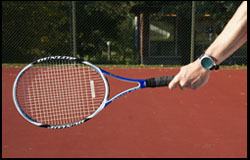 |
 |
Want to Learn To Play the Modern Forehand with more Topspin?


